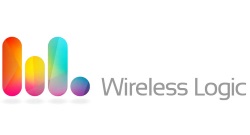Robin Duke-Woolley, the founder and chief executive of Beecham Research interviews Oliver Tucker the chief executive of Wireless Logic to learn more about how customers can receive the experience of owning their own connectivity to support their IoT applications.
Robin Duke-Woolley: The Wireless Logic Group has made two strategic moves recently. Can you say more about those and how that has impacted on what the company offers?
Oliver Tucker: Firstly, we acquired Nucleus Networks late last year, enhancing our high bandwidth applications in terms of offering a more complete managed service. This not only included the management of connectivity, but the bundling of routers and gateway devices as well. As a direct result, we are seeing more and more business in verticals, such as retail, where there is a growing need for multiple hardware solutions – back-up/failover, temporary stores and electronic point of sale (EPoS). Further examples include ADSL back-up and CCTV scenarios where Nucleus enables us to provide managed connectivity combined with pre-configured hardware which is integrated with our management platform, enabling total control end-to-end. It also enables us to offer enhanced security packages, for example creating and managing secure mesh networks for customers. This acquisition has opened the way for us to offer more of the overall solution in a way that gives users better control through a world-class platform.
Secondly, we took a strategic decision to make a significant investment in our own infrastructure, resulting in a transformational realignment with our own core network as a full MVNO. This has been supported by the acquisition of Cloud 9, an MVNE travel and mobile data specialist. The investment and on-going development has enabled us to create what we believe is an unrivalled platform offering focused solely within the IoT market. The acquisition has included a consumer-focused interface which will add multiple user-experience options as IoT applications become more household in their nature, and as the value-chain extends to be more conjoined directly from the OEM to the endcustomer. Importantly, this does not conflict with our relationships and agreements with MNOs which have grown in stature over the last ten years.
There will always be a demand for local and standardised global connectivity solutions which typically are found within the M2M/IoT aftermarket. The seismic shift for us is to deliver more control and influence directly into our customers’ hands by placing our connectivity and infrastructure platform at the core. We use the phrase: “You can now own your own connectivity.” Our new IoT platform will empower users to shape their communication structures more specifically to their applications’ needs, and become more cost-effective and accountable by managing their expenditure in line with usage patterns. For OEMs, globally-based service providers and other specific markets, this control and flexibility is now on a new level. With multi-international mobile subscriber identity (IMSI) technology, over-the-air (OTA) programming and by owning our own home location register (HLR) and gateway GPRS support node (GGSN), the opportunities for a more focused and service-backed connectivity platform are immense. Wireless Logic is now a GSMA member and standards contributor and will shortly have the capability to become an embedded universal integrated circuit card (eUICC) certified provider. Our enhanced positioning is designed to have a positive influence within the IoT eco-system.
RD-W: So how does this all fit with Wireless Logic’s IoT platform SIMPro?
OT: We created the first iteration of SIMPro back in 2006. Consequently, in the last ten years the platform has evolved considerably. A lot of it has been driven by our customers and that’s originally where it came from – the services our customers were demanding, the controls, the management and the connectivity. It has evolved to become a totally unique service offering – it is network agnostic, bearer service agnostic and truly platform agnostic integrating into Jasper’s platform, Vodafone’s platform (GDSP) and into Ericsson’s platform.
We also provide a platform where platforms don’t exist and that is how the market has grown and developed. If you take a Vodafone or O2 UK SIM, they haven’t had management platforms for users to observe and control their connected device estates out in the field. In fact, management was really by way of a spreadsheet. With SIMPro we provide our users with one window across multiple MNOs, irrespective of where they are across the globe, with continuity and a unified set of controls across all the different networks and services. This has been unique with real-time data monitoring, usage reporting, spend controls and location tracking, all designed to optimise their assets’ connectivity performance.
Previously, they would not be able to get that level of control from the MNOs directly. When we consider that of our top 50 customers, the average number of networks that they use across their estate of SIMs is about five. So, what’s the alternative? Using five different and unlinked platforms is not tenable. That’s where our one window SIMPro has come from and in ten years it has changed dramatically – in its functionality, its usability and in its relevance to the way customers now need to manage their connectivity. Today, the platform provides more than connectivity management. Providing bolt-on services such as mapping with HERE and Google Maps is a natural extension to deliver more to each connected asset. And in an era of selfservice SIMPro will become more multi-levelled in terms of access and controllability – enabling users to develop applications where connectivity is seen as a service-focused proposition throughout the value chain. This can now be achieved by our positioning as an MVNO with our own HLR. We will be developing new layers of service which are tailored to the needs of the M2M and IoT eco-systems.
RD-W: What sort of services do you have in mind?
OT: They fall into seven main categories:
Security and monitoring, spend management, network management, service automation, high value/flexible propositions, 24×7 support and pre-integrated platforms.
For security and monitoring, our services include device traffic restrictions, activity intelligence and managed VPN services. We are now able to provide far more detailed services than we could previously as we now have the ability to integrate directly with the GGSN and the mobile core.
For spend management, as we move further into the IoT space, we will be developing more specific services for B2B2C type situations. So, for example where product manufacturers want to provide more direct services to their users, we can now offer payment services related to the use of products and services consumed. Through the platform, we will be able to collect monthly connectivity subscriptions along with other customer payments, creating a one-stop billing service which will enhance a manufacturer’s customer journey.
For contracts, we can now rewrite the rulebooks in relation to contract terms. Rather than having a fixed period contract of 12, 24 or 36 months, we can create payment solutions such as pay as you go, payment via credit card, or online transactions.
Spend management can also be influenced by controlling data usage. Through the platform, users can now manage usage by utilising a number of tools which can shape their assets’ connectivity patterns including data capping, throttling and service pooling. These, and other functions, will change people’s approach to what were previously limited and unwieldy connectivity solutions where flexibility and control had always been lacking, across the market.
RD-W: Can you say more about network management?
OT: For network management, our offering is multi-bearer. Whilst virtually all our business today is cellular-based, we can deliver fixed line, satellite and will also integrate others such as Wi-Fi, LoRA, NB-IOT and LTE-M solutions as they gather momentum. We are building a platform where users can now access all connectivity and infrastructure solutions, with services honed to the needs of connected IoT assets. Along with an opex-based, ready-built and future-proofed secure infrastructure with public/private access point names (APN), fixed public and private IP, users can now build solutions for today and tomorrow. In addition, users have control of the networks with IMSI management, automated network selection and failover, profile management, live connection status, together with OTA programming for profile and device management updates. That’s how SIMPro is evolving. With our own core network, users can genuinely own their own connectivity.
RD-W: Just picking up on that last one in your list – what do you mean by pre-integrated platforms?
OT: By adding other platforms, whether they are middleware platforms, device management or analytics. For example, it’s the ability for us to be able to provide integrations such as Zapier into our overall solution. We can help the management of connectivity from within other business systems already in use by our customers such as Salesforce or Zendesk, or the integration of the Teltonika management platform side-byside with SIMs and connectivity. Ultimately, while we don’t want to go down the vertical solution route, the ability to be able to integrate middleware platforms into SIMPro should help our customers get to market faster with their own products. We are also starting to work with cloud providers, solution providers and OEMs who have their own platforms allowing us to pre-integrate SIMPro for their customers to enable them to provide end-to-end solution management from a single window.
There is then the opportunity to link up local platforms across an international infrastructure, linking different markets in different countries.
And with the arrival of multi-IMSI technology, OEMs will look further to develop connectivity solutions as part of their value chain. SIMPro is truly a platform without borders. By creating a ‘one platform fits all’ scenario, we will be able to support global programmes whether from one country or multiple locations, linking up markets, customers and consumers with one seamless experience, and an opportunity to extend customer relationships as the OEM remains connected for longer with the end-user.
RD-W: Where do you see things going with SIMPro?
OT: SIMPro is evolving and it is very much the DNA of the group. It offers multiple bearer services, the many new opportunities of remote network switching and eUICC technologies, and the ability to give customers complete ownership of their connectivity solutions. So, whether there is a need for a traditional SIM card, an embedded SIM, or a soft SIM, complemented by one or more other services which may be outside of the realms of cellular, we will have the answer.
RD-W: So how is Wireless Logic positioning itself in relation to MNOs?
OT: Wireless Logic’s positioning is clear within the IoT space. Our USPs are ready-made management and infrastructure platforms, inherent flexibility, network agnostic capability with access to more than 600 global networks, and an ability to layer on additional services shaped to a customer’s application. Our approach to the market is typically a more consultative one with teams of specialists providing first-hand expertise across many verticals. Consequently, our solutions can often favour organisations that require a suite of platform services over and beyond mainstream connectivity. These are carrier-grade services that a vast array of businesses depend on, but can rarely access via other providers.
 As a European and global business, we have 2.4 million SIM subscriptions today. Wireless Logic Group continues to be ahead of the growth curve and our services are evolving with influence by the rapidly growing market. Our platforms and services will become more business-critical for users as applications become more intrinsic and accountable to their business operations.
As a European and global business, we have 2.4 million SIM subscriptions today. Wireless Logic Group continues to be ahead of the growth curve and our services are evolving with influence by the rapidly growing market. Our platforms and services will become more business-critical for users as applications become more intrinsic and accountable to their business operations.










